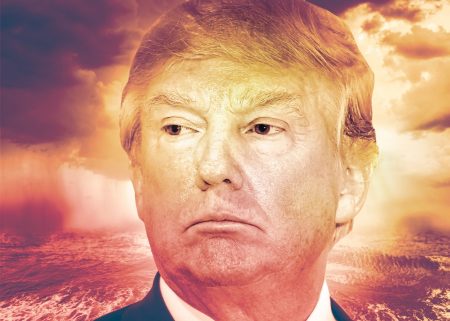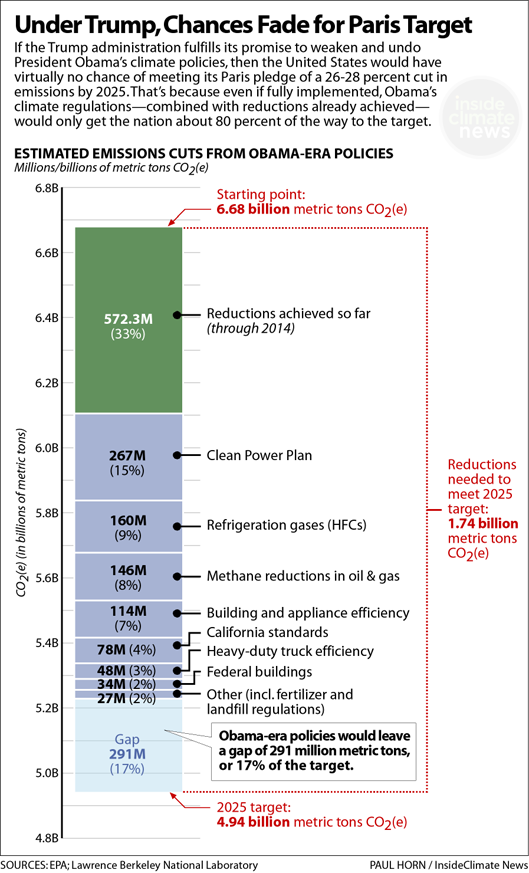March 21, 2017 – It is spring in the Northern Hemisphere starting today, a beautiful day here in Toronto where I live. That’s the local weather and not the global climate that I am describing. That picture is far different, one that the World Meteorological Organization (WMO), consisting of 191 member states in the United Nations, describes as having hit a new record high for the last three years. And 2017 is starting off the way 2016 ended pushing temperatures even higher. According to the WMO, we are in “truly uncharted territory” based on a report issued today. The Earth has not been this warm for 115,000 years.
What happened to our species in that last warming period? Early homo sapiens may have been compelled to migrate from conditions in Africa that were marginal for existence. So we may owe our global distribution as a species to past climate change. And we certainly may find many of our species on similar footing as we continue to see the impact of what is now being defined as rapid climate change.
As of January 2017, the Earth’s mean temperature had risen 1.1 Celsius (2 Fahrenheit) degrees. When you consider the Paris Climate Agreement of 2015 set 2.0 Celsius (3.6 Fahrenheit) as the upper limit of what was considered the maximum disruptive global warming target, and that 1.5 Celsius (2.4 Fahrenheit) the aim of the nations, party to the COP21 meeting, it would appear we are getting perilously close.
Now add the budgetary massacre that President Donald Trump intends to inflict on the U.S. in addressing its participation in helping achieve those climate targets and you pretty much can see the writing on the wall for hitting 2.0 let alone 1.5. The most recent analysis on America’s carbon reduction participation, a commitment to an emissions drop of 1.7 billion metric tons by 2025 (the 26 to 28% greenhouse gas reduction pledged), under Trump will fall far short, by at least 1 billion. The following infographic illustrates my point.
Sir Robert Watson, a climate scientist at the University of East Anglia in the United Kingdom states “While the data show an ever-increasing impact of human activities on the climate system, the Trump administration and senior Republicans in Congress continue to bury their heads in the sand.” He continues, “Our children and grandchildren will look back on the climate deniers and ask how they could have sacrificed the planet for the sake of cheap fossil fuel energy when the cost of inaction exceeds the cost of a transition to a low-carbon economy.”
In 2016 we have witnessed extensive damage to Australia’s Great Barrier Reef from ocean temperature rises which are accelerating. We have seen levels of carbon dioxide (CO2) in the atmosphere accelerate approaching 410 parts per million in what climate scientists describe as an unprecedented pace. Not only are we recording new sea ice minimums at the poles but also are witnessing increased acidification in these waters from dissolved CO2. The danger to polar marine life cannot be underestimated.
According to an article appearing in today’s Globe and Mail, the latest International Energy Agency report released yesterday, meeting the Paris Climate Agreement’s 2.0 Celsius upper limit will require a 40% drop in oil demand by 2050. The report indicates it would require “an unparalleled ramp up of all low-carbon technologies in all countries…the rapid phase-out of fossil fuel subsidies; [carbon] prices rising to unprecedented levels; extensive energy market reforms, and stringent low-carbon and energy-efficiency mandates” to achieve the target. Fossil fuel use, states the report, would have to peak by 2020 and then fall by 70% from today’s levels by 2050. Clearly, this cannot happen without the world’s second largest consumer of fossil fuels, the United States, being part of the solution and not a contributor to the problem.
Add to this the March 15, 2017, release of the Medical Society Consortium’s study on climate health and you would think the heads of even climate science deniers would be turned. Who is the Consortium? It is a group representing 11 medical societies and 400,000 physicians in the U.S. It states that “most Americans” are not aware of the impact of global warming on their health. That’s why the Consortium is speaking out and describing the harm being done with children, the elderly, the sick and poor most vulnerable. In the executive summary of the report the doctors point out that “climate change is already causing problems in communities in every region of our nation,” arguing that “the most important action we can take to protect our health is to reduce heat-trapping pollution by reducing energy waste and accelerating the inevitable transition to clean renewable energy.” The report goes on to state, “we are sounding the alarm that the ultimate danger of climate change is that it poses a danger to the health of every American now and in the future.”
The specifics include:
- Extreme temperatures both cold and hot, more frequent heat waves threatening those who work outdoors, and those who don’t have air conditioning.
- Extreme weather events, droughts, torrential rains, more intense storms, and tornadoes, and flooding.
- Air quality deterioration from air pollution posing a threat to those with respiratory disease.
- Wildfires that accompany droughts and put particulate matter into the air to exacerbate respiratory conditions.
- Diseases from insect carriers of malaria, Dengue, Chikungunya, Zika, Lyme and others migrating into more temperate climate zones.
- Water-related infections such as E. coli, Vibrio, and others as freshwater sources heat up, or torrential rains cause storm water overflows leading to contaminated aquifers, wells, lakes and rivers.
- Flood-related land diseases that impact food sources through the spread of fecal bacteria and pathogens.
- Mental health impacts on citizens from all of the above.
One would hope that even Donald Trump will listen to a doctor now and then.










